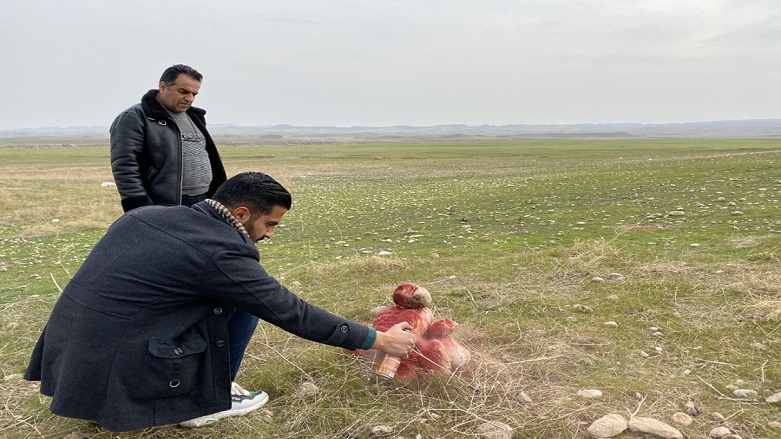Land mine remnants, explosive leftovers remain threat in disputed Khanaqin district

ERBIL (Kurdistan 24) – Local organizations and activists in the disputed Khanaqin have advised locals of mines and explosive leftovers from the Iraq-Iran war, calling on people to avoid 60 specific locations around the district.
The warning comes following the rainy season, as rain and flash floods often relocate the mines, and move the explosives that have been installed during the 1980 to 1988 Iraq-Iran war.
Mohsen Murad, a supervisor for the awareness of mines, hazard, and explosive locations at Work Toward Peace in Khanaqin, said the organization has “pinpointed 60 locations in the villages of Khanaqin district since the start of 2019 that still have land mines and explosives left over from the war.”
“There are dozens of minefields that have been located and require cleaning; however, they have not been de-mined yet,” Murad added.
Diyala governorate, which is where Khanaqin is located, runs along the Iranian border and, thus, is one of the areas where a lot of mines and explosives were planted during the war.
One of the issues Murad pointed to was that “some of the 60 locations are close to areas where people live, and in some cases, they are close to displaced persons camps.”
According to data from the Mandali subdistrict’s administration, there are still one million pieces of explosives, mines, and war dregs that remain within the border of the area.
The Mandali subdistrict is located in eastern Diyala and is considered a disputed territory between the Kurdistan Regional Government (KRG) and the Federal Government of Iraq, according to Article 140 of the Iraqi Constitution.
The data from Mandali also indicated that since 2003, six people died due to mine remnants, while another 11 are either disabled or injured.
Banaz Hassan, a civilian from Khanaqin, told Kurdistan 24 they have found mortar shells during picnics in the outskirts of Khanaqin, which has “forced us to avoid those areas and contact the proper authorities.”
Work Toward Peace will begin its activities in Spring 2020, especially during the Kurdish New Year (Newroz) in March, where people flock outdoors to picnic. During that time, the organization will start to raise awareness through signs and pamphlets on places to avoid mines or unexploded ordinances and steps to take if one sees them.
The mines date back to the 1980s during the war between Iraq and Iran, where the Iraqi regime planted thousands of mines on the border to hinder the advance of Iranian troops. The eight-year war began in September 1980 and continued until August 1988.
After 1991, many local and international organizations from mine sectors contributed to clearing the Iraq-Iran border from explosives. Large swaths of territory remain dangerous as they have not been de-mined yet.
Editing by Karzan Sulaivany
